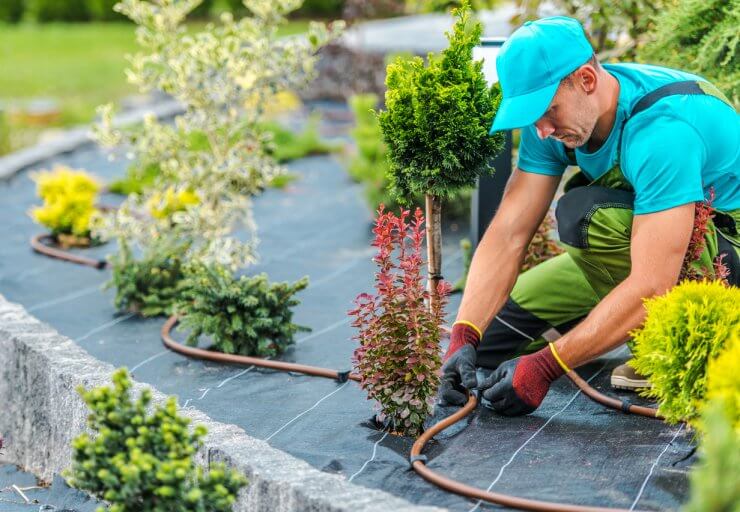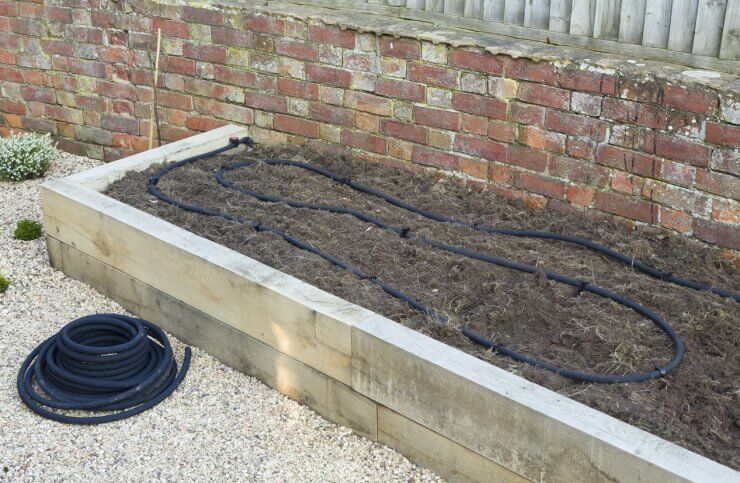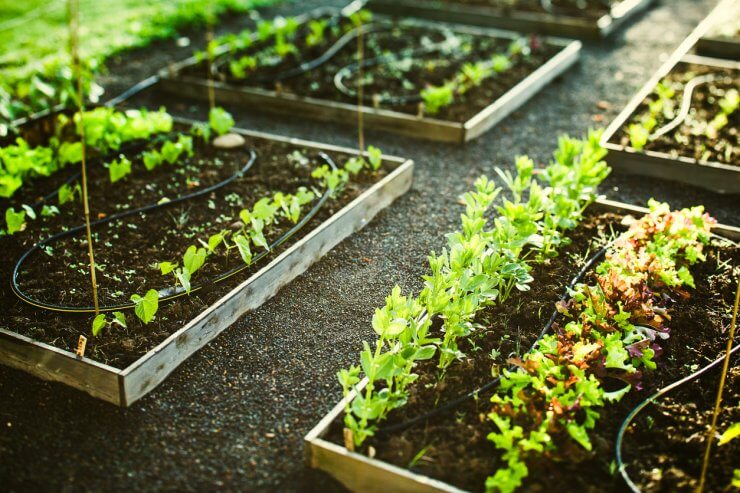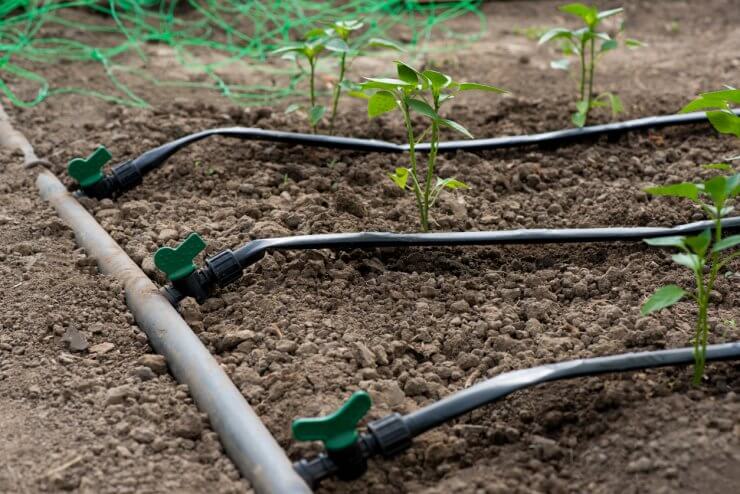
I sometimes wish watering my vegetable garden (and folding laundry, and cleaning bathrooms) was as easy as an I Dream of Jeannie head-nod. (Am I dating myself?) It’s not that I don’t like watering my garden. I really do. But it’s sometimes tricky finding the time to visit every vegetable with the hose. Irrigation systems are a time saver in this regard. Garden irrigation systems come in many different shapes, sizes, and price points. When deciding on a system for your vegetable garden you can go the professional route and have one installed or you can put together a homemade irrigation system.
In terms of a professional-grade irrigation system, you can a hire sprinkler and irrigation technician to come to your house and install irrigation equipment with little fuss. This is probably the easiest way to incorporate an irrigation system into your vegetable garden, however, it can come at a hefty cost. Depending on the size of your garden you can expect to spend a few thousand dollars hiring a professional.
Discover 7 top tips for growing, harvesting, and enjoying tomatoes from your home garden—when you access the FREE guide The Best Way to Grow Tomatoes, right now!
Benefits of a homemade irrigation system
There are different ways of building your own homemade irrigation system. Recycled or inexpensive materials like simple PVC pipes are great for building a drip irrigation system if you have a bit of skill and confidence around power tools. Another homemade drip system involves purchasing varying lengths of soaker hoses and weaving them throughout your garden. Perhaps the most simple homemade irrigation system involves burying clay pots (or ollas) in the ground and filling them with water. Water seeps through the unglazed pots and provides time-released moisture to the surrounding vegetables. The clay pot irrigation system has been around for centuries and with good reason. It works! Here are three benefits to choosing a homemade irrigation system.

1. Customizable
With a homemade irrigation system, you can design it exactly to fit your garden space instead of having to adjust your garden based on the size and spacing of the professional-grade materials. This is especially helpful if you have an odd-shaped garden with an asymmetrical configuration. This is also beneficial if you have a well-established garden with perennial vegetables and herbs that you want to protect.

2. Easy to reconfigure
My favorite thing about a homemade irrigation system is that you can easily reconfigure them based on your changing needs. From year to year or even month to month, you can move your homemade irrigation system around the garden based on what vegetables you are growing at a specific time. Probably the easiest homemade irrigation system to reconfigure is the clay pot method, where you would just need to dig up and move your clay pot to a different garden location and fill it back up with water.

3. Cost-effective
Perhaps the biggest benefit of a homemade irrigation system is the cost savings. One of the largest costs in a professional system comes from the installation labor. If you are willing and able to get your hands dirty, those installation costs disappear. You can also save money by using inexpensive materials, as is the case with the PVC pipe method and the clay pot irrigation method.

There are pros and cons in choosing between professionally installed vs. homemade irrigation systems. It’s true that by going the homemade route you’ll likely save money. But it’s wise to consider your skill level before choosing a homemade irrigation system that requires power tools and general coordination. (I think I’m calling myself out here!) If you don’t have the right tools or skills, you might end up spending more money in the long run when you need to return to the hardware store over and over again. Measure twice and cut once!
And let’s not forget about time. You need to weigh the cost of the time you’ll spend building a homemade irrigation system. If it’s going to take you a month of weekends to build an irrigation system, it may be worth the extra cost to have a professional do it. But, with such simple methods like the soaker hoses and the clay pot systems, I’m confident you can create a homemade irrigation system that suits your garden’s needs.
Have you built a homemade irrigation system? What materials did you use? What are your recommendations? Let me know in the comments?
Discover 7 top tips for growing, harvesting, and enjoying tomatoes from your home garden—when you access the FREE guide The Best Way to Grow Tomatoes, right now!





What brand is the water barrel with large screen top in photos?
I’ve built a couple of irrigation systems using pvc pipe that worked great until last year when I had new raised bed garden.. not enough pressure. Looking to maybe using old/repaired soaker hoses this year.
Good idea old hoses still good for something